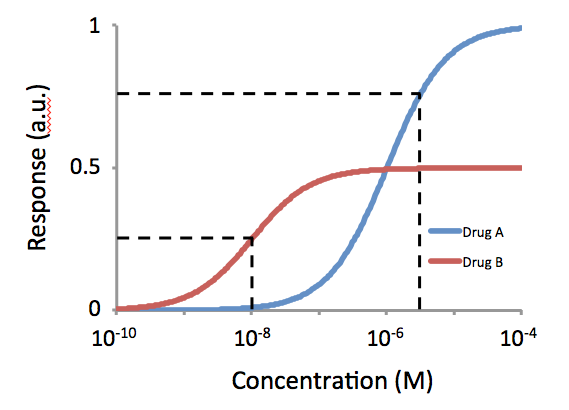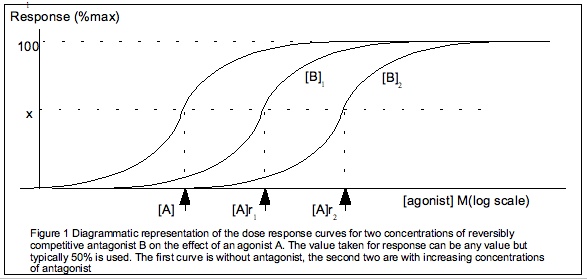|
Riligustilide
Riligustilide is a nonsteroidal phytoprogestogen that is found in ''Ligusticum chuanxiong''. It is a very weak agonist of the progesterone receptor (EC50 ≈ 81 μM). Another compound in the plant, 3,8-dihydrodiligustilide, is also a phytoprogestogen, but is almost 1,000-fold more potent in comparison ( EC50 = 90 nM). See also * Kaempferol * Tanaproget Tanaproget (INN; developmental code names NSP-989, WAY-166989) is an investigational nonsteroidal progestin. It is a high affinity, high efficacy, and very selective agonist of the progesterone receptor (PR). Due to its much more selective b ... References Progestogens Cyclobutanes Lactones Alkene derivatives Spiro compounds {{genito-urinary-drug-stub ... [...More Info...] [...Related Items...] OR: [Wikipedia] [Google] [Baidu] |
Nonsteroidal
A nonsteroidal compound is a drug that is not a steroid nor a steroid derivative. Nonsteroidal anti-inflammatory drugs (NSAIDs) are distinguished from corticosteroids as a class of anti-inflammatory agents. List of nonsteroidal steroid receptor modulators Examples include the following: * Estrogens: benzestrol, bifluranol, estrobin (DBE), diethylstilbestrol (stilbestrol), dienestrol, erteberel, fosfestrol, hexestrol (dihydroxystilbestrol), methallenestril, methestrol, methestrol dipropionate, paroxypropione, prinaberel, and triphenylethylene, as well as many xenoestrogens * : acolbifene, afimoxifene, arzoxifene, bazedoxifene, broparestrol, chlorotrianisene, clomifene, clomifenoxide, cyclofenil, droloxifene, enclomifene, endoxifen, ethamoxytriphetol, fispemifene, idoxifene, lasofoxifene, levormeloxifene, miproxifene, nafoxidine, nitromifene, ormeloxifene, ospemifene, panomifene, pipendoxifene, raloxifene, tamoxifen, toremifene, trioxifene, zindoxifene, ... [...More Info...] [...Related Items...] OR: [Wikipedia] [Google] [Baidu] |
Phytoprogestogen
Phytoprogestogens, also known as phytoprogestins, are phytochemicals (that is, naturally occurring, plant-derived chemicals) with progestogenic effects. Relative to their phytoestrogen counterparts, phytoprogestogens are rare. However, a number have been identified, including kaempferol, diosgenin (found in yam), apigenin (found in chasteberry), naringenin, and syringic acid, among others. In addition, 3,8-dihydrodiligustilide from ''Ligusticum chuanxiong'' is a potent progestogen ( EC50 = 90 nM), whereas riligustilide Riligustilide is a nonsteroidal phytoprogestogen that is found in ''Ligusticum chuanxiong''. It is a very weak agonist of the progesterone receptor (EC50 ≈ 81 μM). Another compound in the plant, 3,8-dihydrodiligustilide, is also a phytop ... is a weak progestogen (EC50 ≈ 81 μM). References Progestogens {{pharmacology-stub ... [...More Info...] [...Related Items...] OR: [Wikipedia] [Google] [Baidu] |
Ligusticum Chuanxiong
''Ligusticum striatum'' (syn. ''L. wallichii'') is a flowering plant native to India, Kashmir, and Nepal in the carrot family best known for its use in traditional Chinese medicine where it is considered one of the 50 fundamental herbs. It is known by the common name Szechuan lovage. It contains the phytoprogestogens 3,8-dihydrodiligustilide and riligustilide. Uses Along with ''Ligusticum wallichii'', L. striatum is one of the possible herbs used to make the Chinese Traditional Medicine ''chuānxiōng'' () It is used in China, with portions of other plants and herbs (such as monkshood and '' Rosa banksiae'') to make a liniment to treat a painful swelling of the joints. It can be used to treat ischemic strokes, improve brain microcirculation and inhibit thrombus formation and platelet aggregation. References striatum The striatum, or corpus striatum (also called the striate nucleus), is a nucleus (a cluster of neurons) in the subcortical basal ganglia of the foreb ... [...More Info...] [...Related Items...] OR: [Wikipedia] [Google] [Baidu] |
Agonist
An agonist is a chemical that activates a receptor to produce a biological response. Receptors are cellular proteins whose activation causes the cell to modify what it is currently doing. In contrast, an antagonist blocks the action of the agonist, while an inverse agonist causes an action opposite to that of the agonist. Etymology From the Greek αγωνιστής (agōnistēs), contestant; champion; rival < αγων (agōn), contest, combat; exertion, struggle < αγω (agō), I lead, lead towards, conduct; drive Types of agonists Receptors can be activated by either agonists (such as[...More Info...] [...Related Items...] OR: [Wikipedia] [Google] [Baidu] |
Progesterone Receptor
The progesterone receptor (PR), also known as NR3C3 or nuclear receptor subfamily 3, group C, member 3, is a protein found inside cells. It is activated by the steroid hormone progesterone. In humans, PR is encoded by a single ''PGR'' gene residing on chromosome 11q22, it has two isoforms, PR-A and PR-B, that differ in their molecular weight. The PR-B is the positive regulator of the effects of progesterone, while PR-A serve to antagonize the effects of PR-B. Mechanism Progesterone is necessary to induce the progesterone receptors. When no binding hormone is present the carboxyl terminal inhibits transcription. Binding to a hormone induces a structural change that removes the inhibitory action. Progesterone antagonists prevent the structural reconfiguration. After progesterone binds to the receptor, restructuring with dimerization follows and the complex enters the nucleus and binds to DNA. There transcription takes place, resulting in formation of messenger RNA that i ... [...More Info...] [...Related Items...] OR: [Wikipedia] [Google] [Baidu] |
Potency (pharmacology)
In the field of pharmacology Pharmacology is a branch of medicine, biology and pharmaceutical sciences concerned with drug or medication action, where a drug may be defined as any artificial, natural, or endogenous (from within the body) molecule which exerts a biochemi ..., potency is a measure of drug activity expressed in terms of the amount required to produce an effect of given intensity. A highly potent drug (e.g., fentanyl, alprazolam, risperidone, bumetanide, bisoprolol) evokes a given response at low concentrations, while a drug of lower potency ( meperidine, diazepam, ziprasidone, furosemide, metoprolol) evokes the same response only at higher concentrations. Higher potency does not necessarily mean greater effectiveness or more side effects. The IUPHAR has stated that 'potency' is ''"an imprecise term that should always be further defined"'', for instance as EC_, IC_, ED_, LD_ and so on. See also * Reaction inhibitor § Potency References F ... [...More Info...] [...Related Items...] OR: [Wikipedia] [Google] [Baidu] |
EC50
] Half maximal effective concentration (EC50) is a measure of the concentration of a drug, antibody or toxicant which induces a Stimulus%E2%80%93response_model, response halfway between the baseline and maximum after a specified exposure time. More simply, EC50 can be defined as the ''concentration required to obtain a 50% ..effect'' and may be also written as sub>50. It is commonly used as a measure of a drug's potency, although the use of EC50 is preferred over that of 'potency', which has been criticised for its vagueness. EC50 is a measure of concentration, expressed in molar units (M), where 1 M is equivalent to 1 mol/ L. The EC50 of a ''graded'' dose response curve therefore represents the concentration of a compound where 50% of its maximal effect is observed. The EC50 of a ''quantal'' dose response curve represents the concentration of a compound where 50% of the population exhibit a response, after a specified exposure duration. For clarification, a gra ... [...More Info...] [...Related Items...] OR: [Wikipedia] [Google] [Baidu] |
Kaempferol
Kaempferol (3,4′,5,7-tetrahydroxyflavone) is a natural flavonol, a type of flavonoid, found in a variety of plants and plant-derived foods including kale, beans, tea, spinach, and broccoli. Kaempferol is a yellow crystalline solid with a melting point of . It is slightly soluble in water and highly soluble in hot ethanol, ethers, and DMSO. Kaempferol is named for 17th-century German naturalist Engelbert Kaempfer.Kaempferol at .com; retrieved October 20, 2017 Natural occurrence Kaempferol is a secondary metabolite found in many plants, plant-derived foods, and traditional medicines. Its flavor is considered bitter. In plants and food< ...
|
Tanaproget
Tanaproget (INN; developmental code names NSP-989, WAY-166989) is an investigational nonsteroidal progestin. It is a high affinity, high efficacy, and very selective agonist of the progesterone receptor (PR). Due to its much more selective binding profile relative to most conventional, steroidal progestins, tanaproget may prove to produce fewer side effects in comparison. As of December 2010, it is in phase II clinical trials in the process of being developed for clinical use as a contraceptive by Ligand Pharmaceuticals. An analog of tanaproget, 4-fluoropropyltanaproget (18F), has been developed as a radiotracer for imaging of the PR in positron emission tomography. See also * Finerenone * Mapracorat * Prinaberel Prinaberel ( INN, USAN) (developmental code names ERB-041, WAY-202041) is a synthetic, nonsteroidal, and highly selective agonist of the ERβ subtype of the estrogen receptor. It is used in scientific research to elucidate the role of the ER ... Refer ... [...More Info...] [...Related Items...] OR: [Wikipedia] [Google] [Baidu] |
Progestogens
Progestogens, also sometimes written progestagens or gestagens, are a class of natural or synthetic steroid hormones that bind to and activate the progesterone receptors (PR). Progesterone is the major and most important progestogen in the body. The progestogens are named for their function in maintaining pregnancy (i.e., ''progestational''), although they are also present at other phases of the estrous and menstrual cycles. The progestogens are one of three types of sex hormones, the others being estrogens like estradiol and androgens/ anabolic steroids like testosterone. In addition, they are one of the five major classes of steroid hormones, the others being the androgens, estrogens, glucocorticoids, and mineralocorticoids, as well as the neurosteroids. All endogenous progestogens are characterized by their basic 21-carbon skeleton, called a pregnane skeleton (C21). In similar manner, the estrogens possess an estrane skeleton (C18), and androgens, an androstane sk ... [...More Info...] [...Related Items...] OR: [Wikipedia] [Google] [Baidu] |
Cyclobutanes
Cyclobutane is a cycloalkane and organic compound with the formula (CH2)4. Cyclobutane is a colourless gas and commercially available as a liquefied gas. Derivatives of cyclobutane are called cyclobutanes. Cyclobutane itself is of no commercial or biological significance, but more complex derivatives are important in biology and biotechnology. Structure The bond angles between carbon atoms are significantly strained and as such have lower bond energies than related linear or unstrained hydrocarbons, e.g. butane or cyclohexane. As such, cyclobutane is unstable above about 500 °C. The four carbon atoms in cyclobutane are not coplanar; instead the ring typically adopts a folded or "puckered" conformation. This implies that the C-C-C angle is less than 90°. One of the carbon atoms makes a 25° angle with the plane formed by the other three carbons. In this way some of the eclipsing interactions are reduced. The conformation is also known as a "butterfly". Equivalent pu ... [...More Info...] [...Related Items...] OR: [Wikipedia] [Google] [Baidu] |


